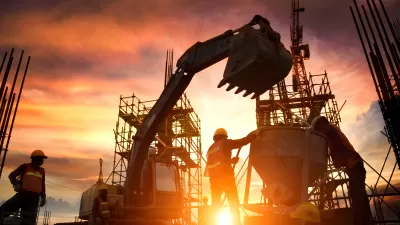A low unemployment rate means major investments by the federal government could ultimately harm the economy.

Tales of American’s failing infrastructure are not new, but, in recent months, they do seem to have increased in number and become more urgent in tone.
That does not, however mean that it’s the right moment to invest in major projects, writes Evan Horowitz at FiveThirtyEight, because “[w]hile inking an infrastructure deal is tricky under the best of circumstances, now is a particularly bad time — because the economy is just too strong.”
That’s because infrastructure spending (and the corresponding creation of jobs) benefits the economy when the government is providing jobs to the unemployed, but not when workers are leaving one job for another.
“[I]n today’s economic climate, where unemployment is nearing a 50-year low, even a massive infrastructure bill would likely generate only a trivial number of new jobs. Instead, the government would have to fill its construction crews by poaching private-sector workers, which could potentially create an inflation-generating war for scarce workers and neutralize many of the economic benefits commonly associated with large-scale government spending.”
Of course, for anyone living with failing infrastructure, or anyone in desperate need of a project with soaring costs, how the Federal Reserve feels about the unemployment rate does not feel particularly relevant.
Even if it means risking a negative impact on the economy, Horowtiz writes, "that still leaves one perfectly good reason to support such spending: It improves America’s crumbling infrastructure. But skeptics can point to the economic risks as a reason to say, yet again, ‘Let’s fix our infrastructure some other time.'"
FULL STORY: America May Finally Be Ready To Fix Its Infrastructure. Too Bad The Timing Stinks.

Planetizen Federal Action Tracker
A weekly monitor of how Trump’s orders and actions are impacting planners and planning in America.

Map: Where Senate Republicans Want to Sell Your Public Lands
For public land advocates, the Senate Republicans’ proposal to sell millions of acres of public land in the West is “the biggest fight of their careers.”

Restaurant Patios Were a Pandemic Win — Why Were They so Hard to Keep?
Social distancing requirements and changes in travel patterns prompted cities to pilot new uses for street and sidewalk space. Then it got complicated.

Platform Pilsner: Vancouver Transit Agency Releases... a Beer?
TransLink will receive a portion of every sale of the four-pack.

Toronto Weighs Cheaper Transit, Parking Hikes for Major Events
Special event rates would take effect during large festivals, sports games and concerts to ‘discourage driving, manage congestion and free up space for transit.”

Berlin to Consider Car-Free Zone Larger Than Manhattan
The area bound by the 22-mile Ringbahn would still allow 12 uses of a private automobile per year per person, and several other exemptions.
Urban Design for Planners 1: Software Tools
This six-course series explores essential urban design concepts using open source software and equips planners with the tools they need to participate fully in the urban design process.
Planning for Universal Design
Learn the tools for implementing Universal Design in planning regulations.
Heyer Gruel & Associates PA
JM Goldson LLC
Custer County Colorado
City of Camden Redevelopment Agency
City of Astoria
Transportation Research & Education Center (TREC) at Portland State University
Camden Redevelopment Agency
City of Claremont
Municipality of Princeton (NJ)





























